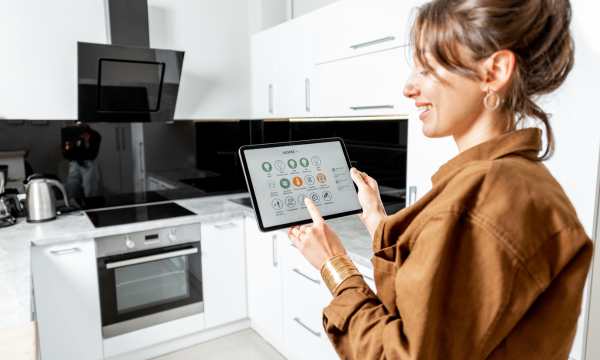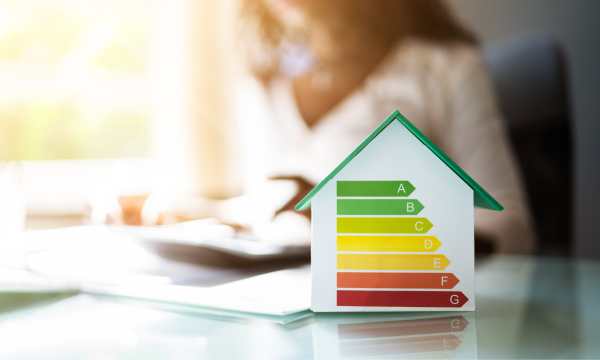Seamless Living: Smart Home Systems Integration
In today’s technologically advanced age, the concept of home living has transcended its usual limitations.
Ad
With the rise of smart home systems, homes are no longer just a place to live but also a place where people can communicate with each other, making life simpler, more efficient and more connected. This article discusses the paradigm shift that smart home systems have brought about and examines how these systems connect various aspects of our lives to make living a distinctive experience.
Total Control of Your Home:
Integrating a smart home system is more than just connecting a few gadgets; it also means coordinating many different technologies to create a complete home control system. A nerve centre is a centralised hub, usually a smart speaker or home automation controller. It allows users to easily control and monitor all their connected devices. This centralised control makes the user’s work easier and makes the smart home feel more connected.
Ad
Connections between Devices:
One of the best things about integrating smart home systems is that different devices can connect together without any problems. These gadgets, such as smart heaters, lighting systems, security cameras and entertainment systems, communicate with each other and work together to make the home function better. Users can control multiple devices simultaneously through a unified platform, making living spaces more responsive and connected.
Smart Security Integration:
Homeowners place a high value on security, and smart home system integration takes this into account by adding a wide range of security options. Smart locks, motion alarms, doorbell cameras and security cameras together form a powerful security network. Users can receive instant alerts, watch live broadcasts and even control who can enter their home remotely, giving them peace of mind and a sense of security.
Efficient Energy Management:
Saving energy is an important part of smart home living. Integrated smart home systems make it easy to control energy-consuming gadgets. Smart lighting systems can communicate with smart thermostats to get the most out of energy based on activity and user preferences. This synergy not only reduces energy costs but also helps people live in a way that is better and more sustainable for the world.
Easy-to-Use Automation:
Automation is what smart living is all about. The integration of smart home systems enables smart control scenarios. For example, when a user opens the front door with a smart lock, the system can turn on certain lights and simultaneously set the thermostat to a comfortable level. These personalised, automated processes make everyday tasks easier and can be easily changed to meet user needs.
Cross-Platform Compatibility:
Smart home systems are more useful because they can work with multiple platforms. Integrated systems can accommodate different user preferences, whether they prefer to use voice commands via a virtual assistant, a smartphone app or a dedicated control panel. The ability to use multiple platforms ensures that people with different technological tastes can enjoy the benefits of smart home living.
Customisable Entertainment:
Smart home systems can also be used for entertainment, giving users a customisable and immersive experience. Integrated audio and video systems, such as smart TVs and audio equipment, work together seamlessly to create a fun atmosphere. Users can enjoy a personalised, seamless entertainment experience across multiple devices, whether watching music, movies or games.
Easy-to-Use Interface:
Smart home system integration relies on an easy-to-use interface. Manufacturers have tried to create a user-friendly platform and make it easier to set up and control connected devices. Voice commands, touch screens and mobile apps all make the experience accessible and easy to use, allowing homeowners to easily control their smart home.
Data Privacy and Security Measures:
As smart home systems become more intelligent, it is important to ensure they have strong data privacy and security measures. To ensure the security of user information, manufacturers attach great importance to encryption, secure identification and regular updates. It’s also important to educate users on best practices to keep smart home systems secure, such as setting strong passwords and updating software regularly.
Future Prospects and New Developments:
The integration of smart home systems is constantly changing, and new developments are shaping the future of connected living. When improvements in artificial intelligence, machine learning and sensor technology come together, they can make smart homes smarter and more responsive. As technology advances, we can expect new features, better interoperability and new applications that will further change the concept of ‘seamless living’.
Conclusion:
The way we view and interact with living spaces has changed a lot since the introduction of smart home systems. Effortlessly connect, manage and automate different parts of your home life, making life easier, more efficient and better for everyone’s health. As technology advances, smart home systems become easier to connect and use together. This gives people more options to make their living space unique and flexible.
To enter the era of seamless living through the integration of smart home systems, you must find a balance between new ideas and security. Living in a connected world not only makes life easier, but also helps homeowners save on energy costs, feel safer and make their lives more personal. As we look to the future of the smart home, the integration of advanced technologies will certainly be an important part of the smart home outcome.
FAQs:
1. What is smart home system integration and how is it different from a single smart device?
Smart home system integration refers to the seamless combination and coordination of various smart devices in the home so that they can communicate and work together harmoniously. Unlike a single smart device that works independently, integration enables centralised control, automation and synchronisation across multiple devices, creating a more cohesive and connected smart home environment.
2. How can the integration of smart home systems improve energy efficiency?
Smart home system integration improves energy efficiency by enabling intelligent communication between devices. For example, integrated systems can automate coordination between smart thermostats and lighting, adjusting settings based on occupancy and user preferences. This synchronised approach optimises energy consumption, reduces energy bills and creates a greener home.
3. Are smart home systems compatible with devices from different manufacturers?
Interoperability is an important consideration when integrating smart home systems. Although compliance standards such as Zigbee and Z-Wave are designed to promote consistency, issues can arise when integrating devices from different manufacturers. It is critical to select equipment that supports common protocols or invest in a central hub that can manage different communications standards.
4. How secure are smart home systems and what measures can be taken to protect privacy?
Security is the top priority for smart home system integration. Manufacturers implement encryption, secure authentication and regular software updates to protect user data. Users can improve security by creating strong and unique passwords, updating firmware regularly, and configuring privacy settings. It is crucial to stay vigilant about device security and stay on top of updates.
5. Can users customise automation scenarios in smart home systems?
Yes, one of the benefits of smart home system integration is the ability to create customised automation scenarios. Users can customise automation sequences to their own preferences and connect different devices to perform specific operations. For example, unlocking a smart door lock can trigger adjustments to the thermostat and lighting, creating a personalised and adaptive home automation experience.
 How to Use a Truck GPS App on Android
How to Use a Truck GPS App on Android
Experience the freedom of smart routes and precise navigation with a truck GPS app on Android. Ad […]
More Innovations Unveiled: Overview of Smart Home Appliances
Innovations Unveiled: Overview of Smart Home Appliances
The rapid development of technology has changed our way of life. Ad One of the most exciting […]
More Green Living: Energy-Efficient Smart Appliances
Green Living: Energy-Efficient Smart Appliances
With caring for the planet becoming increasingly important, green living has never been more important. Ad Adding […]
More